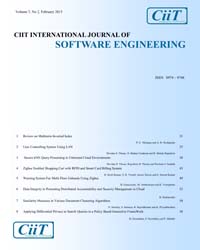Vertex Coloring of a Graph
Subscribe/Renew Journal
Graph coloring is one of the most important concepts in graph theory and is used in many real time applications. Various coloring methods are available and can be used on requirement basis. The proper coloring of a graph is the coloring of the vertices and edges with minimal number of colors such that no two vertices should have the same color. The minimum number of colors is called as the chromatic number and the graph is called properly colored graph. In this paper we reviewed the vertex coloring concepts, properties and theorem related to various graphs of vertex colorings and its chromatic number.
Keywords
Vertex Coloring, Minimum Degree, Maximum Degree, Chromatic Number.
User
Subscription
Login to verify subscription
Font Size
Information

Abstract Views: 253

PDF Views: 3



